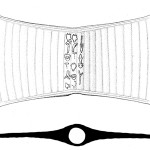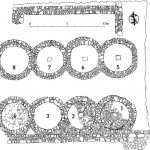When Diversity Matters: Exploring Funerary Evidence in Middle Minoan III Crete
Luca Girella
Aside from limited studies on individual cemeteries or tomb types, analysis of Middle Minoan III funerary evidence remained in the shadow. Reasons can be found in the dearth of archaeological remains, and it is useful to remember that most of the evidence for this period, both domestic and mortuary, derived mainly from sites occupied in the following period (Late Minoan IA) and destroyed in Late Minoan IB. By collecting information on tomb architecture, cemetery distribution and burial assemblages the paper aims to investigate the development and regionalism of burial practices during Middle Minoan III, and to explore aspects of the social and political landscape. In particular, two palatial regions will be considered to be paradigmatic in understanding how burial choices were strictly related to different polities and social realities: the north-central and south-central Crete. The mortuary customs of these two areas reflect different political and social dynamics at the beginning of the Neopalatial period. The variety of burial practices among different regions of the island is also highlighted and provides significant evidence for the transitional stage of Middle Minoan III that saw regional shifts after the destruction of the first Palaces and before the reconstruction of new centres of power.

Girella L. 2015, When Diversity Matters: Exploring Funerary Evidence in Middle Minoan III Crete, SMEA NS 1, 117-136


